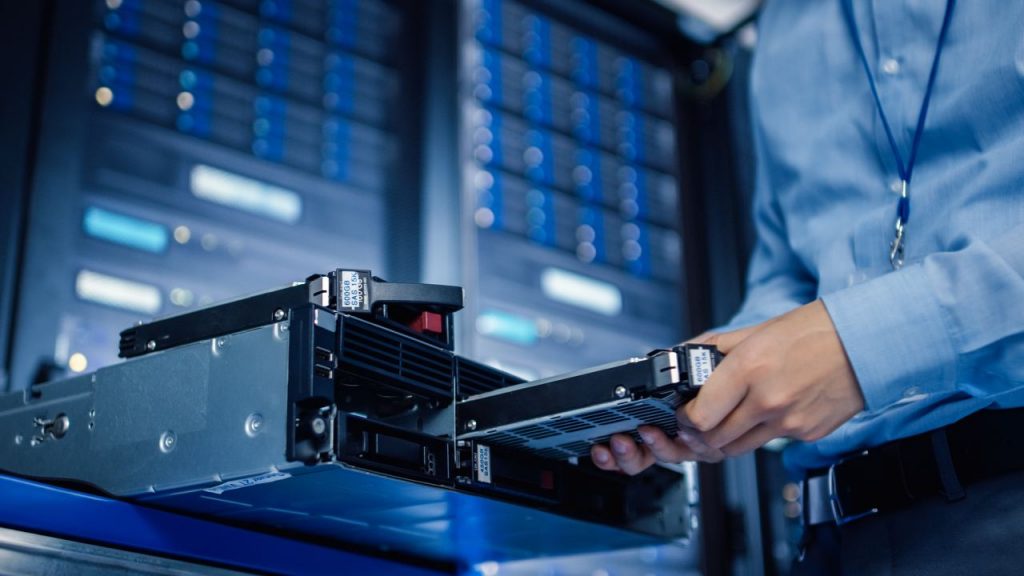This revolutionary combination has already revolutionized how people interact online, from financial transactions to securely sharing information.
In this blog post, we will explore the connection between Web3 and blockchain technology, outline the difference between Web 2.0 and Web 3.0 and uncover the benefits of blockchain technology in Web 3.0, along with exploring the essential roles of cryptocurrency in this space, and predict its future development trajectory. By the end, you should have a much better understanding of how Web 3.0 and blockchain technology is transforming our digital world. Let us get started!
Few facts:
- Web 3.0 is a set of protocols, standards, and platforms built on existing blockchain technology that focuses on creating the Internet of Value (IoV).
- By 2021, it’s estimated that businesses will have spent more than $51 billion on enterprise-level use cases for Web3/blockchain-related technologies.
- Gartner predicts that 90% of global organizations will use some form of decentralized storage by 2022
- It’s predicted that 90% of banks will be using blockchain by 2024

Digital Assets And Their Types
Digital assets are digital files, information, and data created, stored, and used in the digital world. They can be anything from documents such as text, audio/video recordings, images, software programs/applications, and databases to websites/webpages, email accounts, and social media accounts. As technology advances and more things move onto the web, these assets become increasingly important.
At their core, digital assets are digital representations of things that have value. They can be anything from a logo design to personal data. And how they can be used are countless; businesses use them for marketing and advertising, individuals use them for communication, storage and sharing files, etc.
The importance of digital assets lies in their ability to be used and reused. They can be copied, shared, sold, and traded, like tangible items, without physical limitations. Additionally, they’re often stored in multiple locations for easy access and are relatively secure when stored properly.
What is the connecti on between Web 3.0 and Blockchain?
Web 3.0 and blockchain are two different technologies but share a close relationship. Web 3.0 is the term used to describe the evolution of the internet from being a collection of websites to an open platform that supports distributed applications (DApps). It is the next step in the internet’s development and has been predicted to be the foundation for a new wave of software applications and services.
Blockchain offers a secure, tamper-proof ledger system that can store digital assets such as documents, contracts, payments, and other records without relying on central authorities or third parties. By combining blockchain with Web 3.0 technologies, businesses can build more secure, efficient, and transparent applications. This connection between Web 3.0 and blockchain is the foundation of a new digital economy where assets are securely stored and exchanged without intermediaries or mediators. It will also likely revolutionize how companies interact with customers, suppliers, and other stakeholders.
Difference between Web 2.0 and Web 3.0
Have you been curious about what sets Web 3 apart from its predecessor, Web 2? Let’s take a look at the key distinctions between these two iterations of the internet.
Web 2.0 largely focuses on using websites for information sharing and exchange, with a heavy emphasis on user-generated content. This includes social media sites such as Facebook, Twitter, Instagram, and YouTube.
Web 3.0, on the other hand, focuses more on distributed applications (DApps) built on top of peer-to-peer networks.
These apps can be used for various tasks, from data storage and retrieval to digital payments and smart contracts. They are also more secure than their Web 2 counterparts as they do not rely on centralized servers or third parties. Additionally, due to the blockchain technology underpinning them, these applications are more resistant to manipulation and censorship.
Overall, the main difference between Web 2.0 and Web 3.0 is the focus on user-generated content versus distributed applications that leverage blockchain technology. This shift in focus has opened up a world of possibilities for individuals and businesses. It will have an enduring impact on how we use the internet in the future.
At FortySeven we have a unique experience in WEB3, Blockchain. We’ve created a number of very complex solutions for the different industries. If you want to know more, speak to our expert.

Exploring the Benefits of Blockchain Technology in Web 3.0
As web 3.0 and blockchain technology becomes more widely adopted, businesses are finding unique ways to leverage this powerful combination of technologies. Here are some of the key benefits that blockchain tech can bring to your business:
- Greater Security: The distributed ledger system of blockchain allows for secure transactions without a third party or intermediary. This means that your data is better protected from cyber-attacks and fraud.
- Faster Transactions: Blockchain technology can process payments much faster than traditional methods, making it perfect for applications such as online shopping.
- Cost Savings: As blockchain networks are decentralized, there are no server costs or other associated overhead expenses. This means that businesses can save money on transaction fees and additional charges.
- Improved Transparency: Blockchain offers a digital chain of custody that makes it easier to track assets from point A to point B. This helps businesses maintain accurate records and comply with regulatory requirements.
- Increased Efficiency: Blockchain technology can help reduce operational costs and improve workflow by automating mundane tasks.
These are just a few benefits that blockchain and Web 3.0 can bring to businesses. As more companies explore this technology, we’ll see even more innovative applications shortly.
By combining these two powerful technologies, businesses can build secure, efficient, and transparent applications. This connection between Web 3.0 and blockchain is the foundation of a new digital economy where assets are securely stored and exchanged without intermediaries or mediators. It will also likely revolutionize how companies interact with customers, suppliers, and other stakeholders.

Understanding How Blockchain and Cryptocurrency Enhance the Web3 Ethos
In addition to the general benefits outlined above, blockchain technology enables businesses to introduce cryptocurrency as a payment method. Cryptocurrencies offer several advantages over traditional payment methods such as credit cards and bank transfers:
- Lower Fees: As cryptocurrencies are digital assets on decentralized networks, they do not require banks or third parties to verify transactions. This means there are no processing fees or other associated costs, leading to lower overall transaction costs.
- Greater Privacy: Cryptocurrencies offer users greater privacy as the coins exist on a blockchain, and the transactions are not tied to personal information.
- Faster Transactions: As mentioned earlier, cryptocurrencies offer shorter transaction times than traditional methods, allowing quicker and more secure payments.
Blockchain and Web 3.0 are key components of the emerging digital economy. By leveraging these two powerful technologies, businesses can take advantage of greater security, faster transactions, cost savings, and improved transparency.
Conclusion
The combination of blockchain and Web 3.0 technologies offers a business wide range of benefits.
This combination can help businesses increase security, reduce costs, automate mundane tasks, take advantage of faster payments, and improve transparency. As more companies explore this technology and adopt cryptocurrency as a payment method, we will likely see greater mainstream adoption shortly.
In the end, it is clear that blockchain and Web 3.0 are set to revolutionize how businesses interact with customers and stakeholders globally.
By leveraging these two powerful technologies, businesses can take advantage of innovative applications that can help them better meet their customer needs and remain competitive in today’s digital economy.
At FortySeven we can advise you at any stage of your project.



